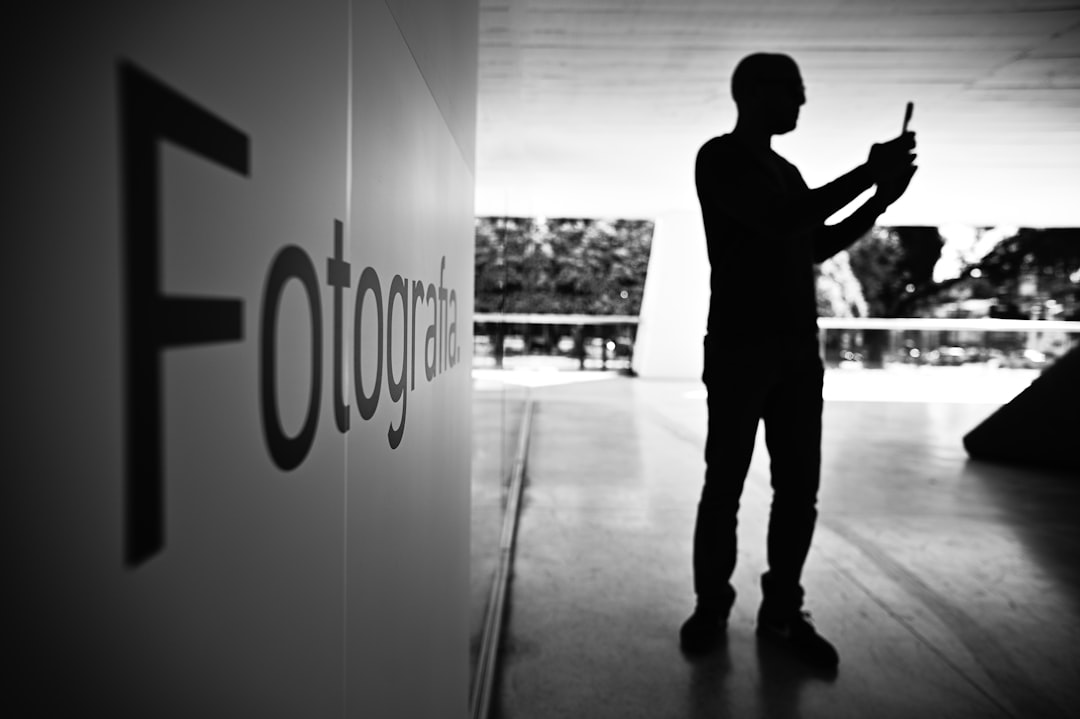

Engage prospects with a scan and streamline customer engagement with FREE QR code marketing tools by Sona – no strings attached!
Create a Free QR CodeFree consultation

No commitment

Engage prospects with a scan and streamline customer engagement with FREE QR code marketing tools by Sona – no strings attached!
Create a Free QR CodeFree consultation

No commitment
In today’s digitally driven world, QR codes have evolved from a novelty to a strategic powerhouse for bridging offline engagement with online action. For internet marketing agencies, QR codes represent a frictionless and remarkably effective way to boost conversions and unify the customer journey, eliminating barriers between real-world impressions and digital interactions. Missed opportunities often arise when prospects engage with print materials but never convert, simply because tracking and follow-up mechanisms are insufficient.
By placing a scan-ready solution at every physical and virtual touchpoint, agencies can convert fleeting interest into tangible leads, removing reliance on paper sign-up sheets or manual data entry. QR code marketing unlocks unique benefits for agencies focused on delivering integrated campaigns, such as rapid lead generation from direct mailers, real-time analytics on print collateral, and dynamic optimization of out-of-home ads. For more context, see these strategic advantages.
With valuable offline engagement often going under-measured, marketing teams face blind spots around which initiatives truly drive action. QR tools empower marketers to refine targeting, capture intent signals, and deliver personalized digital experiences based on physical engagement, creating a holistic feedback loop that closes the gap from awareness to conversion.

Internet marketing agencies often struggle to capture high-value prospects from physical channels because traditional lead collection methods such as printed brochures, fishbowls for business cards, or static sign-up sheets leave gaps in tracking and slow response times, allowing the most engaged leads to slip through. QR codes bridge the gap between physical touchpoints and digital outcomes, making it easier to spark real business growth by ensuring every moment of interest has a clear, measurable path into the digital pipeline.
Replacing manual workflows with QR-first engagement reduces friction, decreases errors, and accelerates conversion velocity. Instead of handing out brochures with a generic URL or accepting paper forms that take days to enter into a CRM, agencies can point every interested prospect to a dynamic, trackable destination that captures contact details and intent signals in seconds. This produces faster follow-up, cleaner data, and clearer attribution that your client success teams can act on immediately.
Modern platforms like Sona QR’s product overview simplify deployment end-to-end, including instant code generation, brand styling, CRM syncing, and conversion analytics. With dynamic routing, geotargeting rules, and UTM automation, agencies can create seamless offline-to-online funnels, then enrich each scan with the metadata needed to attribute pipeline and revenue accurately.

Agencies repeatedly encounter the frustration of high-quality offline interest that does not translate to digital leads because there is no efficient, trackable pathway for prospects to take action. Traditional approaches such as generic URLs on mailers, static signage at events, or printed service menus lack granular attribution, which leads to uncertain campaign ROI and a revolving door of missed follow-up chances. QR codes remove this friction by making the leap from physical media to measurable digital interaction as simple as a scan.
Dynamic QR codes further raise the ceiling on performance. With dynamic links, you can update destinations after deployment, route by audience segment or geography, and test creative variations without reprinting. Each scan produces real-time data about when, where, and how prospects engage, offering immediate visibility into channel performance. This enables marketing teams to prioritize outreach by intent, react to spikes in interest during live events, and allocate budget toward placements that drive conversions rather than impressions. For a real-world outcome, see this 900 signups case study.
Ultimately, QR codes matter because they make every physical impression measurable and actionable. For agencies serving clients with complex journeys, this is the shortest path to stronger conversion rates and better ROI.
Internet marketing agencies can choose from several QR formats, each supporting different engagement, personalization, and tracking needs. Campaign performance often falters when static touchpoints do not offer smooth pathways to digital interaction or cannot be measured effectively. Selecting the right format for the right job improves user experience and data quality at the same time.
Dynamic QR codes are particularly useful for campaigns that require iteration or segmentation. They allow you to change destinations without reprinting, tag scans by source, and push enriched data to your analytics and CRM stack. Static codes still have a place for permanent, non-tracked resources such as office Wi-Fi or a default service menu. Most modern scenarios benefit from dynamic control and measurement.
Choosing between static and dynamic codes requires balancing analytics depth with update flexibility. Most agencies will prefer dynamic codes for active campaigns so they can capture rich data, route by segment, and pivot quickly if a landing page underperforms.

Growth stalls when agencies fail to capitalize on the offline moments that indicate high intent. Busy trade show aisles, high-traffic signage, and mailed collateral all capture attention, yet without a fast, measurable path to action, those interactions remain anonymous. Identifying these moments and attaching a clear QR call to action unlocks a surge of qualified leads who convert faster because they have already self-selected by scanning.
Start by auditing every physical touchpoint your agency or clients use. Look for places where people already pause or engage, then map a scan to a next best action such as booking, downloading, or chatting. Tie each placement to a unique QR so you can compare performance across venues, audiences, and creative.
Selecting placements where your audience already interacts ensures that high-value offline moments are not lost to delayed follow-up or attribution gaps. Pair each placement with a compelling reason to scan and a destination that reduces effort, not increases it.

Disconnected campaigns and slow response times frequently leave prospects unengaged or lost to competitors. By embedding QR codes at key conversion moments, agencies can link interest to instant digital action and capture data that informs future outreach. Focus on use cases that compress time to value for both your agency and your clients.
Integrate QR workflows into your standard operating procedures so your teams can execute consistently across different clients and channels. From event capture to reporting, the goal is the same: make it effortless to take action, then measure the downstream impact in your CRM and analytics platforms.
When these use cases are standardized across your portfolio, your agency gains a repeatable playbook for turning offline touchpoints into measurable pipeline.
A frequent challenge is failing to nurture people who show intent but never formally convert, often because anonymous offline engagement is not captured or synced to retargeting tools. Every QR scan generates a valuable first-party signal that agencies can use to build audiences with precision. With unique codes across campaign stages and channels, you can transform what used to be unknown foot traffic into segmented lists for email, SMS, and paid media.
To do this well, decide in advance what each scan implies about the person’s intent and where they are in the buyer journey. Then tag the scan with that meaning in your CRM so automated follow-ups can reflect what the person likely needs next. Over time, those segments become your highest-performing audiences because they are built on real behavior, not assumptions. For attribution context, see First-touch vs Last-touch Attribution Models.
For internet marketing agencies, audience distinctions often include role and company size, service interest such as SEO versus paid media, and client lifecycle stage such as prospect versus current client. With Sona QR, each QR code can act as a smart intake point, tagging scans with metadata and pushing them into the right workflows automatically.
Fragmented campaigns create inconsistent messaging and wasted ad spend. Integrating QR codes across your marketing stack brings cohesion to your strategy because every offline touchpoint directs to a controlled digital experience with measurable outcomes. This integration turns static media into interactive, trackable channels that support a unified buyer journey.
Think of QR codes as connective tissue across print, events, digital signage, and broadcast. Each scan not only captures intent but also enriches your analytics with real-world context. With a centralized platform such as Sona QR, you can manage code creation, design, routing rules, and integrations while your analytics team synchronizes results with dashboards and attribution models.
QR codes serve as the offline on-ramp to your digital engine. They also unlock a new layer of data collection across channels that were once hard to measure. With Sona QR as your central hub, you can monitor performance, enforce naming and UTM conventions, and sync scan data with CRM and ad platforms to close the loop from scan to revenue.
Campaigns frequently fall short not for lack of ideas, but because lead data is incomplete or fragmented between channels. A structured checklist prevents missed opportunities and ensures that every scan turns into usable, attributed data. Use the steps below as a repeatable operating model across clients and campaigns.
Think of this as your internal quality assurance flow. Each step addresses a common failure point such as unclear goals, poor scannability, or lack of follow-up. With Sona QR, many of these steps can be automated so your team spends more time crafting offers and less time wrestling with logistics.
Start with a clear target conversion that fits the environment such as booking consultations at a trade show, driving webinar registrations from direct mail, or capturing newsletter sign-ups from a speaking session. A concrete goal shapes your destination page, form fields, and follow-up logic.
Align the QR code’s purpose with a measurable business outcome such as a number of qualified bookings, a target conversion rate, or a cost per lead threshold. If you serve a niche vertical, customize the goal accordingly, such as “event RSVPs at a hospitality expo” or “free audit sign-ups from a local chamber event.”
Select static codes for fixed, non-trackable destinations such as a general info PDF. Choose dynamic codes for campaigns that require tracking, updates, or iterative optimization. Dynamic codes store your link in a platform such as Sona QR, which lets you change the destination and maintain analytics.
If attribution, retargeting, or any future flexibility matters, pick dynamic. It enables you to add UTM parameters automatically, route by device or location, and pause or pivot underperforming experiences without reprinting assets.
Brand your QR with a logo, colors, and a clear frame that separates the code from surrounding graphics. Add a benefit-driven CTA near the code such as “Scan to book now” or “Scan for a free case study,” then include a short URL as a fallback.
Test scans across multiple devices, angles, sizes, and lighting conditions. Verify that the destination loads fast, the form is mobile friendly, and the content matches the promise in your CTA. Run a quick A/B test on CTAs before mass printing to avoid committing to a weaker variant.
Choose placements that match your growth plan and audience behavior such as conference backdrops, tabletop displays, direct mailers, brochures, or in-office signage. Adapt the CTA and code size to the environment. For example, larger codes and short CTAs for billboards, smaller codes with detailed CTAs for brochures. See how to integrate QR codes into creative without hurting scannability.
Ensure staff are briefed to point people to the QR and explain the benefit succinctly. In event settings, add QR to badges and swag so scans continue after booth visits, and assign unique codes by location or session to track micro-context.
Use Sona QR to track scans by time, device, location, and source, then monitor conversion behaviors such as form completion and booking rates. Tag high-intent actions so sales alerts and nurture sequences trigger immediately.
A/B test landing pages, CTAs, and code designs. Compare placements by cost per scan and cost per conversion, then roll budget into the best performers. Document insights to inform your next print run or event setup, building a library of field-tested plays.
A concise debrief after each campaign closes the loop. Capture learnings such as optimal code size, best CTA phrasing, or the time of day with the highest scan-to-book rate, then feed those learnings into your templates and SOPs.

One of the most damaging agency challenges is disconnected reporting that leaves offline actions unattributed and the revenue impact of campaigns unclear. Modern QR strategies eliminate this blind spot by capturing granular scan data, linking it to digital behaviors, and syncing it into your CRM for unified attribution. When every scan is measured, the path from first touch to closed revenue becomes visible.
Analytics should not stop at the scan. The critical value lies in understanding how QR engagement influences downstream steps such as form fills, demos, pipeline creation, and expansion. With Sona QR and Sona.com, agencies can move from vanity metrics to revenue-grade intelligence.
The result is a closed-loop system where Sona QR captures real-world engagement and Sona.com turns that engagement into actionable insights. Agencies can finally connect scans to revenue and position QR codes as a core component of performance marketing.
Agencies that maximize QR impact treat codes as strategic connectors, not one-off gimmicks. The goal is to drive higher engagement, capture qualified leads, and align measurement across channels. For additional tactics, see this marketing strategy guide. Focus on consistent execution, smart automation, and clear CTAs that tell people exactly what they get by scanning.
Small implementation details often make the biggest difference. The clarity of your CTA, the speed of your landing page, and the strength of your follow-up flow will determine whether scans turn into customers. Train internal teams and client stakeholders so everyone reinforces the same message at the point of scan.
Creative deployment examples include adding QR codes to agency proposals that link to a customized video walkthrough, or placing a QR on event swag that opens a VIP resource hub. For recurring billing services, include a QR on invoices that encourages clients to review performance dashboards or submit feedback with one tap. Start creating QR codes for free, then integrate scan activity into your existing CRM in minutes.
The persistent challenge facing agencies is the risk of anonymous or untracked interest derailing otherwise strong campaigns. QR codes solve this convergence problem by turning every flyer, event, sign, or mailer into an interactive entry point with a measurable outcome. When you align QR strategy with intent-driven destinations and automated follow-ups, you gain consistent engagement, transparent attribution, and faster pipeline velocity.
As QR adoption grows across industries, the agencies that embrace end-to-end QR strategies will stand out. Intelligent deployment, robust analytics, and CRM sync reduce leakage at every funnel stage and help connect offline behavior to digital nurturing. With Sona QR and Sona.com, you can manage codes centrally, analyze performance in real time, and attribute revenue with confidence.
Now is the moment to modernize your workflows and demonstrate clear ROI to clients. Start by identifying your highest-intent physical touchpoints, build dynamic codes with compelling CTAs, and link them to landing experiences that match the promise. Then close the loop by tracking scans, triggering automated follow-ups, and reporting on pipeline outcomes. With the right playbook and tools, every scan becomes a signal for growth that compounds over time.
QR codes have transformed internet marketing agencies from traditional outreach methods into powerful, data-driven conversion engines. Whether it’s acquiring new clients, enhancing campaign interactivity, or delivering personalized user experiences, QR codes enable seamless, instant connections that capture valuable engagement metrics and turn every marketing asset into a conversion opportunity. Imagine having clear visibility into which campaigns generate leads and being able to optimize them in real time for maximum impact.
With Sona QR, creating dynamic, trackable QR codes is effortless—update your campaigns instantly without costly reprints and link every scan directly to revenue outcomes. This means smarter budget allocation, precise targeting, and measurable growth for your agency and clients alike. Start for free with Sona QR today and transform every scan into a meaningful conversion that drives your business forward.
Agencies can place QR codes at physical and virtual touchpoints to bridge offline engagement with digital action, enabling faster lead capture, real-time tracking, and seamless follow-up that boosts conversions and unifies the customer journey.
QR codes offer rapid lead generation, real-time analytics, dynamic content routing, improved attribution, reduced manual data entry, and the ability to personalize user experiences, all of which enhance campaign effectiveness and ROI.
By providing frictionless scanning that directs prospects to targeted, dynamic destinations with clear calls to action, QR codes simplify user interactions, accelerate follow-up, and convert fleeting interest into measurable leads and sales.
One example includes a campaign that captured 900 signups by using QR codes to link offline materials to digital forms, demonstrating how QR codes can dramatically increase lead capture and engagement.
Agencies can track scan data such as time, location, device, and source using UTM parameters, analyze engagement and conversion metrics in real time, sync data with CRMs like HubSpot or Salesforce, and attribute revenue through multi-touch models to assess campaign ROI.
Use Sona QR's trackable codes to improve customer acquisition and engagement today.
Create Your FREE Trackable QR Code in SecondsJoin results-focused teams combining Sona Platform automation with advanced Google Ads strategies to scale lead generation

Connect your existing CRM

Free Account Enrichment

No setup fees
No commitment required

Free consultation

Get a custom Google Ads roadmap for your business






Launch campaigns that generate qualified leads in 30 days or less.
